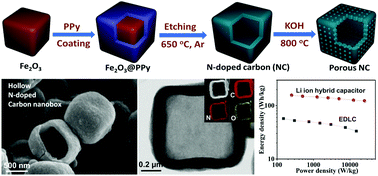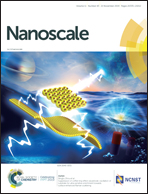A high-power lithium-ion hybrid capacitor based on a hollow N-doped carbon nanobox anode and its porous analogue cathode†
Abstract
Developing advanced lithium-ion hybrid capacitors (LIHCs) has a critical challenge of matching kinetics and capacity between the battery-type anode and the capacitive cathode. In this work, a novel “dual carbon” LIHC configuration is constructed to overcome such a discrepancy. Specifically, hollow nitrogen-doped carbon nanoboxes (HNCNBs) are synthesized by a simple template-assisted strategy. As an anode material (0.01–3 V vs. Li/Li+), the HNCNB electrode exhibits high specific capacity (850 mA h g−1 at 0.1 A g−1) and superior rate capability (321 mA h g−1 at 20 A g−1). After alkaline activation, the HNCNBs become highly porous (PHNCNBs), which offers better capacitance performance within the potential window from 2.5 to 4.5 V (vs. Li/Li+) than commercial activated carbon (AC). Coupling a pre-lithiated HNCNB anode with a PHNCNB cathode forms a dual-carbon LIHC. Since the similar hollow structure in both electrodes could diminish the diffusion distance, the as-prepared HNCNB//PHNCNB LIHC provides high energy densities of 148.5 and 112.1 W h kg−1 at power densities of 250 and 25 000 W kg−1, respectively, together with long-term cycling stability, which efficiently bridges the gap between supercapacitors and lithium ion batteries. Furthermore, the self-discharge behavior and the temperature-dependent performance are also investigated.



 Please wait while we load your content...
Please wait while we load your content...